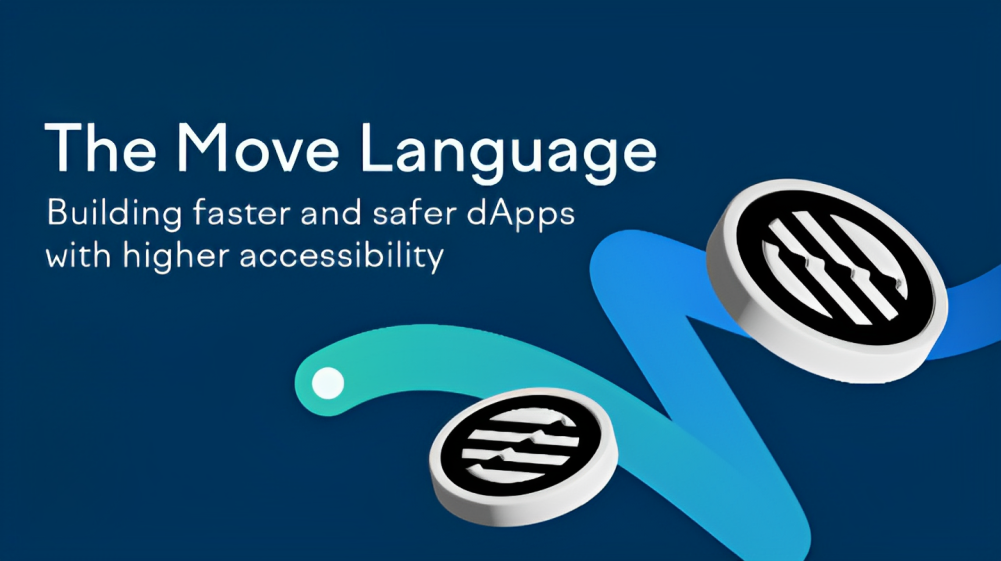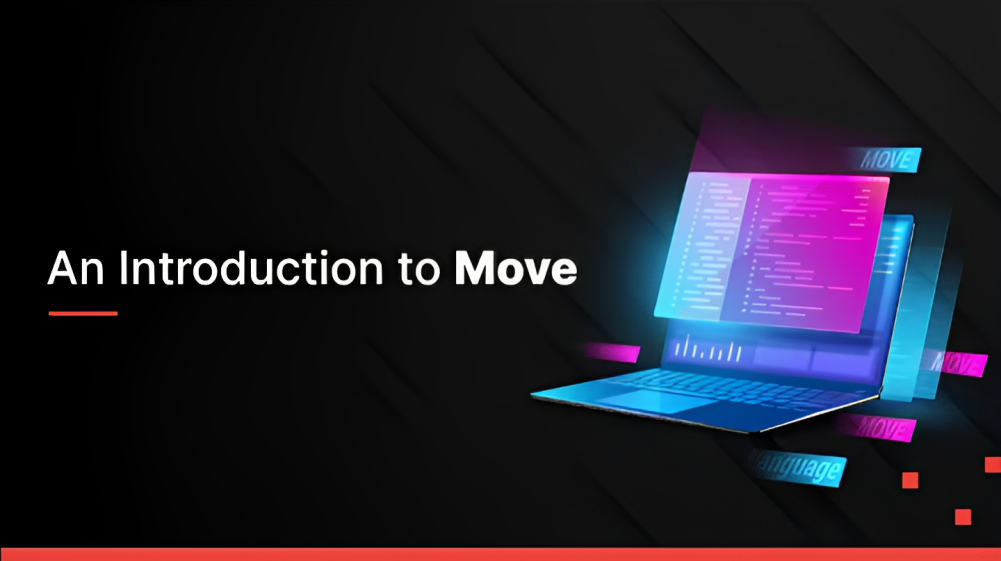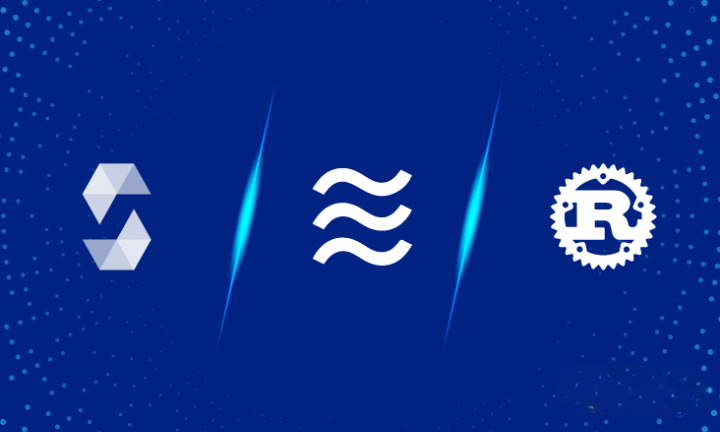Move Language: Building Secure Blockchain Applications with Confidence
 Aditya Khetarpal
Aditya Khetarpal
As blockchain technology continues to evolve, developers seek efficient and secure programming languages to build robust and reliable smart contracts. One language that has gained significant attention in the blockchain community is Move. In this article, we will explore the Move language, its unique features, and how it compares to other popular languages like Solidity and Rust. By understanding Move's design principles, security enhancements, and resource awareness, we can unlock its potential for creating secure and efficient blockchain applications.
The Move Language

Move is a language specifically designed for the Libra blockchain (now Diem) with a strong emphasis on security and resource awareness. Its resource-oriented design allows for precise control over asset ownership and transfer, ensuring the integrity and security of blockchain assets. Move's unique advantage lies in its focus on formal verification, which enables rigorous testing and verification of smart contracts, reducing the risk of vulnerabilities and exploits. This emphasis on security and formal verification positions Move as an ideal choice for developing highly secure and reliable smart contracts.
Security-First Design
Type System and Static Analysis:
Move's security focus begins with its robust type system and static analysis capabilities. The language employs a strict type-checking mechanism that helps catch common programming errors at compile-time, reducing the risk of runtime vulnerabilities. Move's type system enforces strong typing and ownership rules, preventing type-related errors such as mismatched assignments or invalid data manipulation. This rigorous type-checking contributes to the overall security of Move-based smart contracts.
Automated Verification Tools:
Move takes security a step further by providing automated verification tools. These tools enable developers to detect potential vulnerabilities in their smart contracts before deployment. Move's static analyzers and formal verification techniques help identify issues like resource leaks, potential bugs, or violations of security properties. By leveraging these tools, developers can gain confidence in the correctness and security of their smart contracts, reducing the risk of exploits or vulnerabilities.
Security-Oriented Approach:
Move's design philosophy centers around security as a primary consideration. The language promotes secure programming practices by discouraging unsafe operations and providing secure defaults. Move encourages developers to think critically about potential security risks and follow best practices for secure coding. By adopting this security-oriented approach, developers can mitigate common vulnerabilities and design robust smart contracts from the ground up.
Preventing Common Vulnerabilities:
Move addresses common vulnerabilities that can impact smart contracts. It mitigates the risk of reentrancy attacks, a common vulnerability in other languages, by incorporating safeguards that prevent unauthorized access to critical functions during contract execution. Move also addresses arithmetic overflow and underflow risks through its type system and runtime checks, ensuring that numeric operations stay within safe bounds. By proactively preventing these vulnerabilities, Move enhances the overall security posture of smart contracts.
Secure Asset Transfers:
Another aspect of Move's security focus is its resource awareness, which ensures secure asset transfers within the blockchain ecosystem. The language enforces strict ownership and borrowing rules for resources, preventing unauthorized duplication or manipulation. Move's resource-oriented design enables developers to explicitly manage asset ownership and access, reducing the risk of unauthorized transfers or unauthorized modifications to critical resources.
Resource-Awareness and Ownership
One of the distinctive features of the Move language is its resource-awareness and ownership model. In this article, we will explore how resource awareness and ownership in Move contribute to the security and control of blockchain applications.
Resource-Oriented Design
Move adopts a resource-oriented design, where digital assets or tokens within the blockchain ecosystem are represented as resources. Resources have a specific structure and behavior defined by their resource type, making them distinct from regular data types. This resource-oriented design allows for precise control over asset ownership and transfer, ensuring the integrity and security of blockchain assets.
Secure Ownership
In the Move language, ownership refers to the exclusive control and authority over a resource. Only the resource's owner has the right to perform certain operations on that resource. Ownership can be transferred or borrowed, but it can never be duplicated. This ensures that resources are not accidentally or maliciously manipulated without the proper authorization.
Transfer of Ownership
The transfer of ownership in Move follows strict rules to prevent unauthorized actions. Ownership can be transferred through explicit operations, such as explicit resource move or by invoking specific functions that transfer ownership. These operations require the consent and cooperation of both the sender and the receiver, ensuring that ownership is securely transferred and verified.
Borrowing
Move introduces the concept of borrowing, which allows temporary access to a resource without transferring ownership. Borrowing provides a way to access resource data or perform operations on the resource within a limited scope. By borrowing resources, developers can leverage their functionalities without permanently transferring ownership, maintaining control and security over the resources.
Preventing Unauthorized Actions
The resource-awareness and ownership model in Move contributes to preventing unauthorized actions on resources. By strictly controlling ownership transfers and providing borrowing mechanisms, Move mitigates the risk of unauthorized duplication, unauthorized access, or unauthorized modifications to critical resources. This ensures that only authorized entities can interact with resources and perform permitted operations, reducing the potential for exploits or malicious activities.
Advantages of Resource-Awareness and Ownership:
Resource awareness and ownership in the Move language offer several advantages:
Enhanced Security: The ownership model ensures that only authorized entities can perform operations on resources, reducing the risk of unauthorized actions or manipulation.
Fine-Grained Control: Move's resource-oriented design allows for precise control over asset ownership, enabling developers to define and enforce specific access rules and permissions.
Preventing Duplication: Resources cannot be duplicated, preventing unintended or malicious duplication that could compromise the integrity of the blockchain ecosystem.
Secure Transfers: Ownership transfers follow explicit operations, ensuring that transfers are authorized, verified, and auditable, enhancing the security of asset transfers within the blockchain.
Resource Integrity: By enforcing ownership and borrowing rules, Move ensures the integrity of resources, preventing unauthorized modifications and maintaining the expected behavior of resources.
Blockchain Language Showdown: Move, Solidity, or Rust?

Advantages of Move over Solidity:
Security-Focused Design: Move's resource-oriented design and formal verification capabilities make it inherently more secure than Solidity. By preventing common vulnerabilities, such as reentrancy attacks and overflow/underflow risks, Move helps developers build robust and secure smart contracts.
Stronger Type System: Move has a strong and expressive type system that helps catch errors at compile-time, promoting code correctness and security. Solidity's type of system is more permissive, which can lead to potential vulnerabilities if developers are not cautious.
Ownership and Borrowing: Move introduces ownership and borrowing concepts, allowing for secure and controlled access to resources. Solidity lacks native resource management features, requiring developers to implement their safeguards to prevent unauthorized actions.
Advantages of Move over Rust:
Resource-Oriented Design: Move's resource-oriented design ensures secure asset transfers and prevents unauthorized actions, which is a distinct advantage over Rust. While Rust offers memory safety and performance benefits, it does not have native resource management features like Move.
Formal Verification: Move's emphasis on formal verification sets it apart from Rust. Formal verification allows for rigorous testing and verification of smart contracts, minimizing the risk of bugs and vulnerabilities. Rust, while focusing on safety, does not provide the same level of formal verification capabilities.
Built-in Blockchain Features: Move is specifically designed for blockchain development, with built-in features tailored to blockchain applications. Rust, on the other hand, is a general-purpose programming language that can be used for various applications, including blockchain, but may require additional libraries and frameworks to fully leverage blockchain functionalities.
In conclusion, the Move language stands out as a secure and efficient programming language for blockchain development. Its security-first design, rigorous type system, and resource-awareness offer distinct advantages over languages like Solidity and Rust. Move's focus on formal verification ensures the correctness and reliability of smart contracts, mitigating the risk of vulnerabilities and exploits. The resource-oriented design enables precise control over asset ownership and transfer, enhancing the security and integrity of blockchain assets. By choosing Move as the language for blockchain development, developers can leverage its unique features and build highly secure and reliable smart contracts. As blockchain technology continues to evolve, Move emerges as a promising language that empowers developers to create robust and scalable blockchain applications with confidence.
Subscribe to my newsletter
Read articles from Aditya Khetarpal directly inside your inbox. Subscribe to the newsletter, and don't miss out.
Written by
